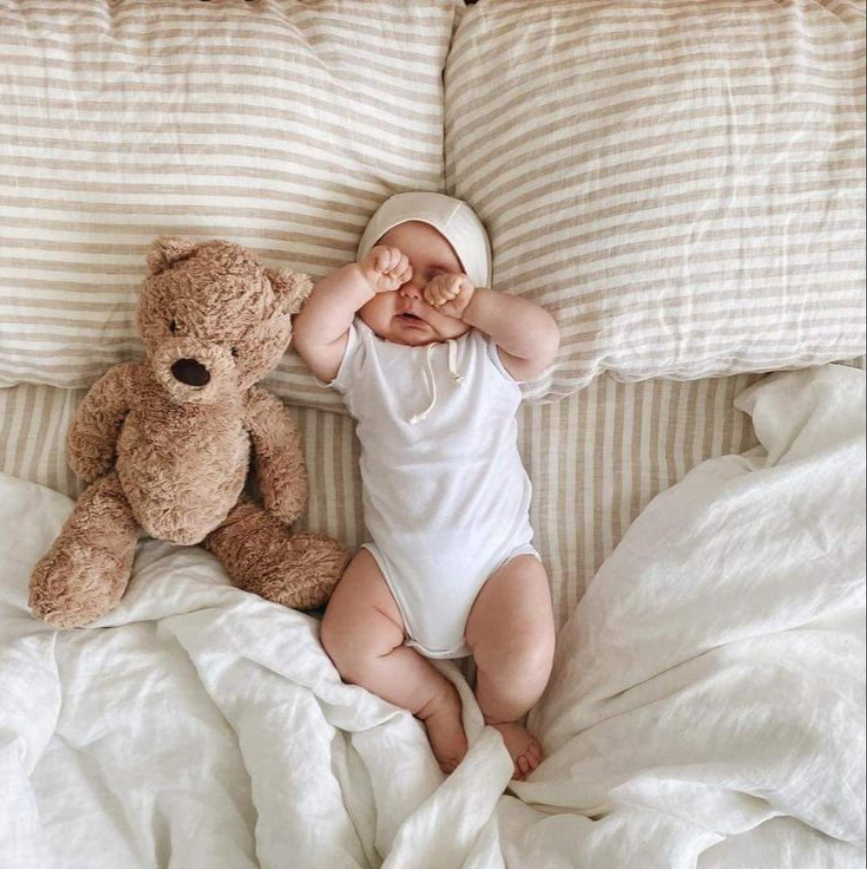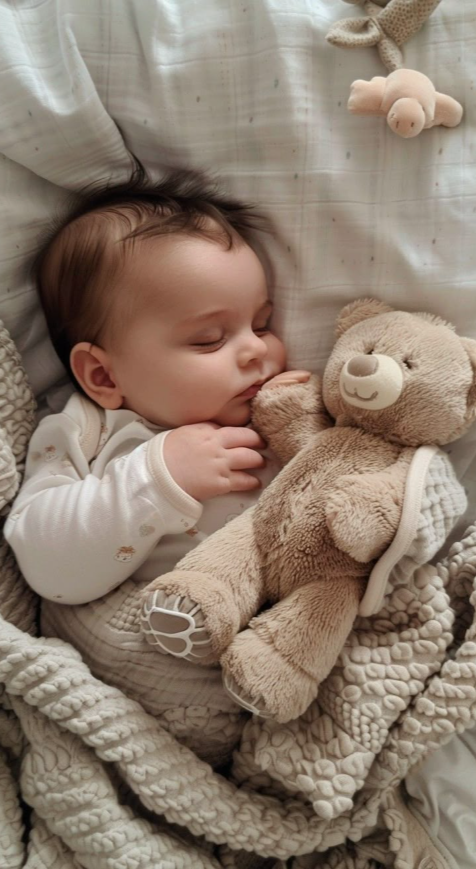If you are reading this then you have come to the right place! I am going to share with you 17 tips to help a toddler with a speech delay.
For the purpose of this article, a toddler refers to children between the ages of 18 and 30 months (give or take a few months). However, many of these tips will work for other age groups as well.
Before I get into the tips I want to make sure you understand the difference between speech and language, as many people will say “my toddler has a speech delay” when they actually are referring to a language delay.
So here is a very brief overview of each:
What is Speech Development?
Speech development refers to the production of specific speech sounds. Most children will learn the sounds /p/, /b/, /m/, /n/, /h/ and /w/ first, along with some basic vowel sounds.
What is Language Development?
Language development refers to both the use and understanding of language. This encompasses:
- learning and using new words
- understanding words
- combining words into phrases and sentences
- grammar
- asking and answering questions
- following directions
- social skills such as turn taking, eye contact, etc.
As I said, this is a basic overview to show you the differences between speech and language development.
The tips I am about to share with you will be for both speech and language! Make sure you have some time set aside to get through the entire list!
If you feel (or have been told) that your toddler’s speech and language development is not where it should be for his/her age give these tips a try.
Since this list is quite lengthy and can be difficult to remember, be sure to download the PDF version! This is a great way to make sure grandparents, aunts, uncles and caregivers have access to the same information you do.
Speech Delay In Toddlers: 17 Ways You Can Help At Home
- Have Your Child’s Hearing Checked
Even if you think that your toddler can hear everything, his hearing may not be 100%. The cause of a mild to moderate hearing loss in toddlers is usually due to ear infections. Since any language a young child is hearing is new to them, they don’t know what to expect. So they must hear everything clearly if they are going to use and understand that language.
Something as simple as fluid in a child’s ears can affect their hearing. Imagine yourself underwater and hearing a language that you are not familiar with. This is what it can sound like to a child with a hearing loss as a result of middle ear fluid. If your child has a history of ear infections, you can make an appointment with an audiologist to have your toddler’s hearing checked.
- Seek The Advice of a Speech-Language Pathologist
If you ever feel like your child is delayed in any area of development seek professional help. The earlier the better! A child’s early years (birth to 3) are a crucial time in their development. Please do not take on a “wait and see” approach when it comes to your child. You are not a bad parent because your child is not developing as per expectations. And you will be a great parent by seeking help for your child.
To find a licensed Speech-Language Pathologist within North America, please click on the Resources tab. In North America Speech-Language services are often publicly funded for children under the age of 3!
You can also get started with the It Takes Two To Talk book, written by Speech-Language Pathologist Elaine Weitzman.
This book has so much actionable information for parents! Please do not be discouraged by the price tag!
I recommended this book to every parent I saw in my practice who had a young child with a speech delay.
- Speak Slowly
17 Simple Tips For Parents Of Toddlers With Speech-Language Delays you can do at home!
Think about yourself learning a new language. If the people you are in regular contact with are speaking quickly, never repeating themselves you would have a hard time learning that language. The same goes for your toddler. This is especially true if your child is learning more than one language.
If you notice your toddler has tuned you out, or seems to be ignoring you, it could be because you are simply going to fast and he can’t keep up (or it could relate to Tip 1).
Slow down when you are speaking directly to your child! You don’t need to sound like you are in slow motion, but take your time when speaking. This doesn’t mean you should use baby talk though.
- Make Eye Contact
Make sure you are looking at your child when you are speaking to them. Children can gain a lot by looking at your mouth while you are speaking. Making eye contact is also an essential part of communication (in most cultures). It is a foundation skill that comes naturally to most children. - Over Pronounce Early Sounds
As I mentioned above, the first sounds typically made by a baby/toddler are /p/, /b/, /m/, /n/, /h/ and /w/. If your child is struggling with these early sounds make sure you are pronouncing them very clearly. And from time to time, over pronounce them.
For example, if you are blowing bubbles for your child really enunciate the “p” in “pop”. You can even point to your mouth to draw your child’s attention to the movement of your lips while you are saying “pop”. The same goes for “bubble”.
- DO NOT Make Your Child Repeat You
This can be a tricky one for many parents. I have seen it happen many times. A child will say a word, for example “bud” (for “bubble”) and the parent will say something like “oh you mean bubble, say bubble, I know you can, say bubble.” This will result in your toddler becoming very frustrated and tuning out.
It’s ok for you to repeat the word, but drop the expectation of having her repeat you. While you may think she should be capable of saying the word correctly, she probably isn’t. A toddler is not developmentally ready to pronounce every sound and word correctly. Pronunciation, or articulation involves many muscles and fine motor skills that a toddler has not developed yet.
- Be a Good Speech/Language Model
This one is pretty much a summary of tips 3,4,5 and 6. If you are following all of these tips, then you are being a good speech and language model! And this leads us into tip 8.
- Repeat, Repeat, Repeat
You will feel like a broken record, but your child needs the repetition. Children need to hear words 100’s, probably 1000’s of times before they begin using the word themselves in a meaningful way (not just repeating you or only using it in certain situations).
Let’s go back to the bubbles activity. Narrate what you are doing. For example, you could say “look at the bubble, do you see the bubble? The bubble is floating away. Uh oh, the bubble popped. Let’s blow another bubble“. In the 2-3 seconds it took you to say those phrases, you have said the word “bubble” 5 times!
- Get Down to Your Child’s Level
Your child will gain more from your interactions with him if you are down at his level. This means getting down on the floor and playing. I know this can be hard for some parents.
I will admit that despite my background and having worked with children before having my own, this was one of the hardest things for me to do. It just didn’t feel natural to me. I would have much preferred to sit on a chair and “observe” my children.
However, I know the importance of “getting down to their level” that I made myself do this. It does get easier and the reward of seeing your child’s smiling face makes it worth the effort. So let your inner child out!
- Choose Toys Without Batteries, or Remove Them When Possible
This section can be an article of its own!
Toys with batteries can get quite annoying. And for toddlers, the sounds that these toys make will not enhance their learning. Some toy manufacturers claim that their toy will teach a child “letters, numbers, colors, etc”, but I have to disagree and many others would support this idea. The whole goal is to get your toddler vocal and verbalizing.
If the toy is doing all of the “talking” the child can sit back and listen. Also, most children are more likely to imitate a person over an electronic toy.
Another thing I would like to point out is that you should not be trying to teach your baby or toddler academic skills (don’t even get me started on the “your baby can read” program – luckily the company seems to have gone out of business).
There is plenty of time for a toddler to learn academic skills. Language skills are a greater indicator of success later on in school than is the fact that your 2 year old can recite their ABC’s.
Now, all of that being said, I will contradict myself a bit. Don’t feel like you cannot have any toys with batteries. Some toys need batteries for basic functioning. My son had a pretty cool ball drop toy that he engaged with more when the batteries were in it.
It came with 3 clear balls that had little animal figures inside (so of course I always told him the animal names and the sounds they made and said the word “ball” many, many times). He could drop the ball into the trees that were part of the toy and watch them come out and then be spun around. The music it played was a bit irritating, but the spinners didn’t work without batteries.
I love open ended toys such as play kitchens, play houses, dolls, blocks, etc. There are many more opportunities to develop language skills with these types of toys!
- Expand and Add Language
If your toddler is starting to use some single words, expand on what she said and add more language. For example, if your child brings you a toy truck and says “truck” you could respond with “yes, it’s a big truck”, placing the emphasis on “big truck”. You could then add even more language around the word “truck”. “The truck has wheels” or “The truck is red”, etc. Or if your child drops something and says “uh oh”, respond and say “uh oh, your cup fell down, let’s pick up your cup“. - Take a Step Back
Try not to dominate your child’s playtime. Take a step back and watch what your toddler is doing and then wait some more. Listen to see if he is saying anything to himself. Or if he isn’t using any words, perhaps he is gesturing or looking intently at something. By taking a step back you can find many new opportunities to communicate with your child!
- Let Your Child Lead
17 Ways to help strengthen your toddler’s speech and language skills
Your child may be interested in things that aren’t of much interest to you. You may try to steer her towards a toy you feel she should be playing with, or an activity you believe would be better for her.
If your toddler expresses an interest in something and you follow her lead, she will be much more interested in interacting with you. You can let your child lead by imitating what she is doing, commenting on what she is doing, repeating things she has said (and expanding), etc.
If you are interested in something, chances are you will be more engaged than if you are doing something that you aren’t interested in. The same goes for a child. If the child is always redirected and doesn’t have the opportunity to do what she would like to do, she will disengage and the language learning opportunities will be lessened.
- Skip the Academics
As I mentioned in Tip 10, many toy manufacturers are using the fact that their toy teaches “academic skills” as a selling feature. Please do not listen to this.
A toddler does not need to work on academic skills. What they do need to work on is developing play skills. Play skills build the foundation for academic skills later on!
- Read, Read, Read
Read to your child daily! Find simple yet engaging books. But stay away from e-books for children of this age group.
While an e-book on a phone/tablet may be engaging because of the ability to touch an item on the screen and watch something happen (cause and effect), studies have shown that children do not engage with this type of book the same way that they do with a physical book. Children do not retain what they heard to the same extent that they do with a physical book.
Cause and effect books do exist as physical books! These are usually “lift the flap” books or “pop-up” books.
Looking at a physical book (holding it, pointing to pictures – without something happening, turning the pages) all help with pre-literacy skills and print awareness.
When looking at books with your child, you do not always have to read the story word for word. Make it up as you go! Let your child point to items in the book and then pause and wait. Listen; your child may say or sign something.
If the book you are reading is a repetitive book such as the classic “Brown Bear Brown Bear” by Bill Martin/Eric Carle and your child has heard it several times, pause to see if your child will fill in the blanks.
- Ask Questions (but not too many)
Ask your child questions to keep the conversation going, but don’t ask too many. You don’t want to come across as a drill sergeant. Ask simple questions such as “where is the ball?” (assuming the child can see it) or “what is on your foot?” This will help with a child’s understanding of language and reinforces vocabulary words. However, don’t “test” your child. This will end up causing a lot of frustration and perhaps even some temper tantrums. - Use Routines, Songs and Finger Plays
Some routines you may be familiar with such as peek-a-boo. A routine basically has certain steps that follow an order and can be repeated many times. Children learn from these routines because of the repetition and if the routine is a people game such as “peek-a-boo” it is also quite fun for the child. You can also make up your own routine if there is something your child is interested in.
My children loved the “fall down” routine we made up. I would have them sit on my lap and move my legs up and down while saying “bump, bump, bump”, then I would pause and say “uh oh you fell down” and slightly open my legs allowing them to “fall” (while still holding my child of course). This always ended up in laughter and them telling me they wanted more of this activity.
Songs and finger plays are also a great way to help with language development. Nursery rhymes also fall into this category. An example of a finger play would be “this little piggy”.
A song that my daughter was fascinated with that we turned into a routine was “row row row your boat”. She sat facing me holding my hands. I would gently pull her back and forth towards me while singing. At the end when we got to “life is but a dream” I would slowly let go so that she would end up laying down. She thought it was the greatest thing ever!
Toddlers also love finger puppets that you can incorporate into finger plays! The puppets allow for further vocabulary development and can be used later on for story telling as well.
I hope that these tips will help you and your child! Please leave me a comment and let me know if you are using any of these tips with your child.
If you made it all the way to the end, don’t forget to download the PDF version so you can refer to this list anytime you want!




